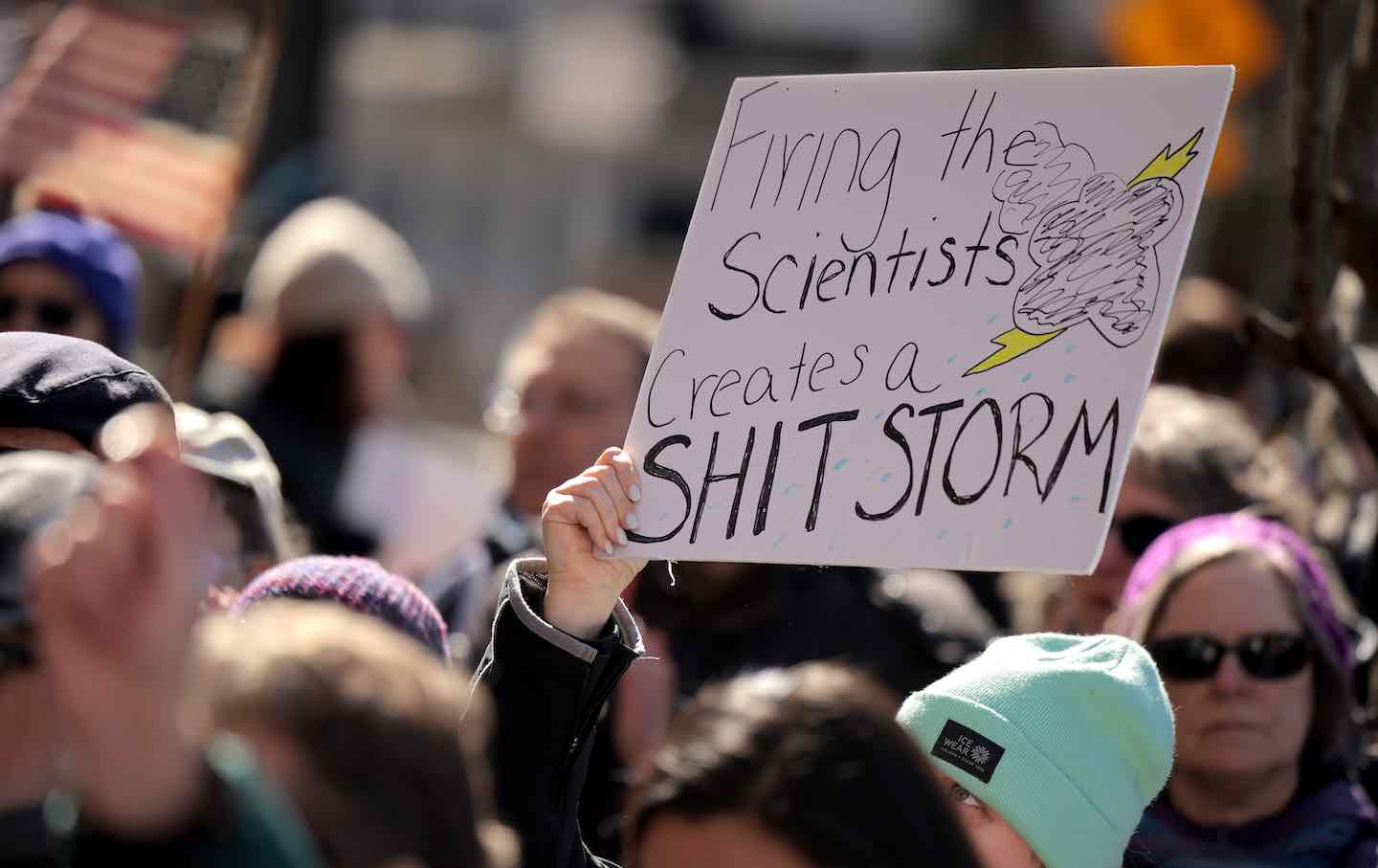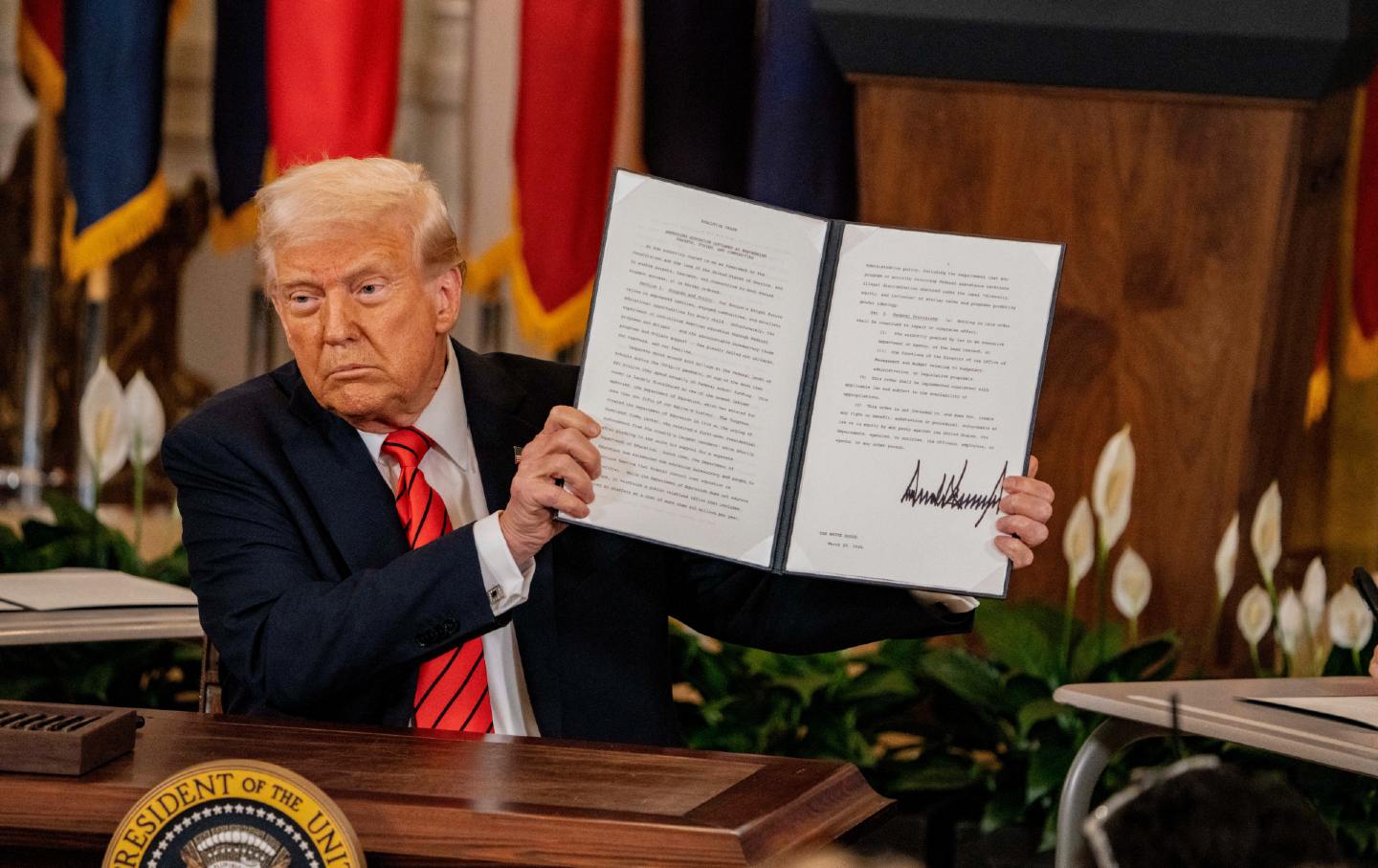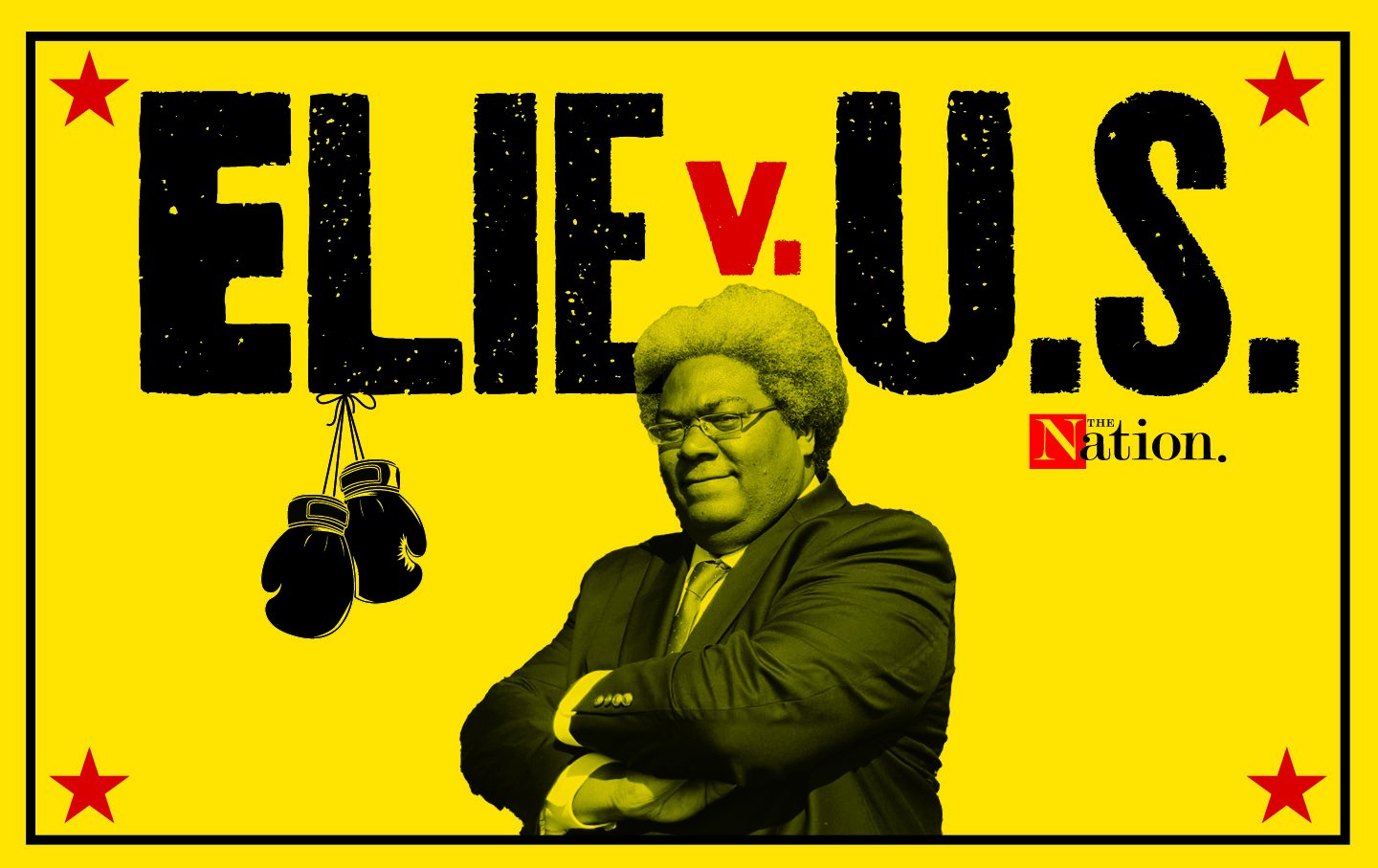
The Alternate-Universe Version of Trump’s Executive Putsch The Alternate-Universe Version of Trump’s Executive Putsch
What would a Democratic presidency armed with Trump’s limitless power look like?
Sep 24, 2025 / David Faris

The Supreme Court Has Always Been This Bad The Supreme Court Has Always Been This Bad
From allowing segregation to gutting abortion rights, the court’s reactionary streak runs deep. A new collection shows why calls for reform are as old as the court itself.
Sep 23, 2025 / Richard Kreitner

The Supreme Court Just Gave the OK to Racial Profiling The Supreme Court Just Gave the OK to Racial Profiling
The court’s ruling allowing ICE to resume its indiscriminate roundups of LA’s Latino residents can only be described as one thing.
Sep 8, 2025 / Elie Mystal

Flag Burning Is Constitutional—but the Supreme Court May Burn That Too Flag Burning Is Constitutional—but the Supreme Court May Burn That Too
Trump’s flag-burning order is totally preposterous—and a total setup.
Aug 27, 2025 / Elie Mystal

Thank the Supreme Court for the Evisceration of the Federal Workforce Thank the Supreme Court for the Evisceration of the Federal Workforce
Progressive politicians must commit to expanding the court, or voters should pledge their support to other candidates who will.
Jul 18, 2025 / Sasha Abramsky

Why Did This Farmworker Die in an Immigration Raid? Why Did This Farmworker Die in an Immigration Raid?
With Trump and Stephen Miller cheering on ICE’s terror tactics, Jaime Alanis Garcia’s fatal fall in the raid on Glass House Farms was the most recent example of a death foretold.
Jul 17, 2025 / David Bacon

The Supreme Court Just Crowned Trump King—Again The Supreme Court Just Crowned Trump King—Again
In ruling the president can decimate the Department of Education, the court took a key congressional power—and gave it to Trump.
Jul 16, 2025 / Elie Mystal

Will the Government Ever Do Right by Mahmoud Khalil? Will the Government Ever Do Right by Mahmoud Khalil?
Khalil is suing the government for false imprisonment and other harms. He should win—but will the courts let him?
Jul 15, 2025 / Elie Mystal

Superman the Immigrant Would Have Saved Texas Superman the Immigrant Would Have Saved Texas
In his weekly newsletter, Elie Mystal lambastes the Republicans’ shameful priorities—and their deadly consequences.
Jul 11, 2025 / Elie Mystal

